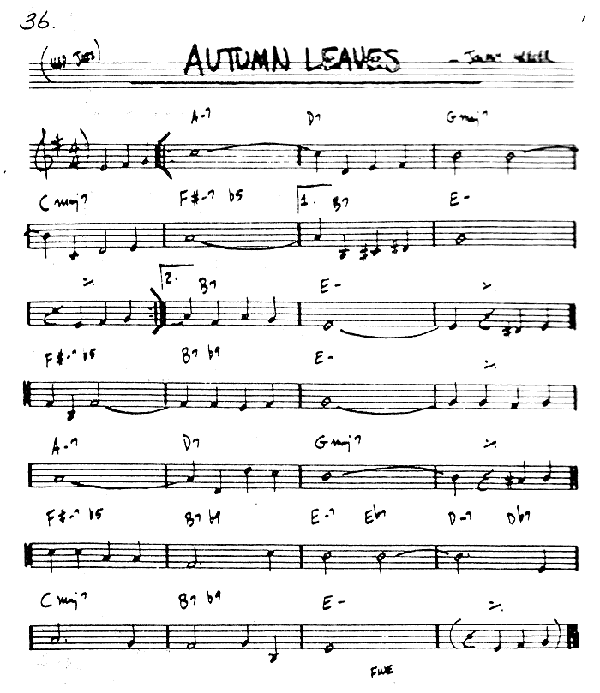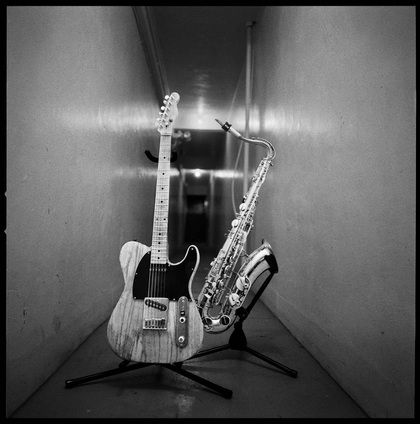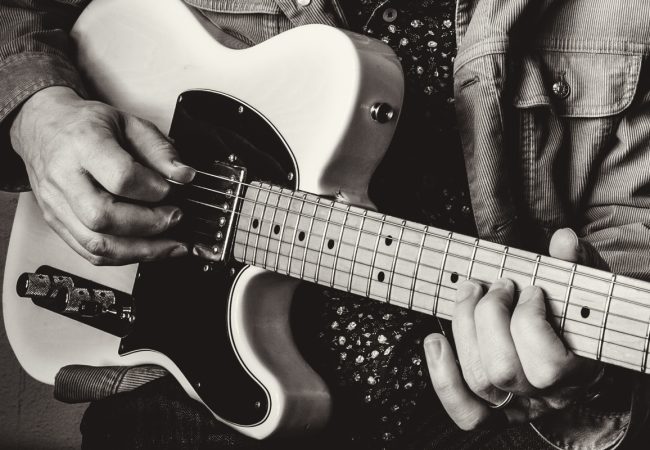One of the main differences between rock and jazz soloing is that the one-scale-fits-all (usually pentatonics) method doesn’t really cut it in jazz playing due to the fact that the chord (and key) changes get more complicated and must be outlined by the soloist in order for the improvisation to make sense in the context of the chords. In this article we’ll be taking a look at four jazz soloing strategies in order to be able to take those first steps into the daunting world of jazz.
1. Scales
If you can hold of it, and have an hour to spare, the video ‘John Scofield on Improvisation’ is well-worth a watch. If you don’t have an hour to spare then this is the takeaway: Scofield talks about there being no great mystery to jazz soloing or soloing over changes. His approach is based on scales and changing scales according to the chord of the moment. This approach is perfectly viable IF you know your scales inside-out all over the neck in every key, in other words there can be no hunting around for root notes and scale shapes; you just roll into the next scale without thinking, wherever you may be on the fretboard. I won’t lie; it takes years to get to this level. You could of course do it on a tune by tune basis i.e. learn the scales you need for the tune inside-out. This will also keep you from going crazy in the woodshed.
2. Chord Tones
If you’re playing over changes it makes sense to know the chords. You’d think this would be obvious, but a lot of guitarists just blow through the changes without really knowing what they’re playing over. The result is usually a little hit and miss which is why targeting chord tones is a good, and very safe, soloing approach. If you look at the chord chart below for Autumn Leaves you’ll see that most of the chords belong to the key of E minor (G major) but there are a couple that are outside the key (B7 is the most notable). You could just blow through them but the beauty of using chord tones is that it really brings out the changes. Start with the 3 and 7 for each chord and gradually add in the other tones. Once you get good at this, you can add in passing tones and approach tones.
Tip: try not to rely on shapes here; you don’t want to be jumping around the fretboard to find chord shapes then extract the notes, there isn’t enough time. Instead you should know the notes and be able to find them within a reduced area on the fretboard. What you want to end up creating here are lines that outline the chord of the moment and lead into the next chord as oppose to trying to superimpose triad shapes or patterns. The 3s and 7s for the first four bars are;
Am7: C, G | D7: F#, C | Gmaj7: B, F# | Cmaj7: E, B
And these can easily be found between the 5th and 8th frets on the top 3 strings.
Check out the book Chord Tone Soloing by Barret Tagliarino or our free eBook: Simple Chord Tone Soloing System for a great in-depth course in this approach.

3. The Key-Centered Approach
This approach involves dividing up the tune’s chords into keys as a lot of jazz tunes feature more than one key. The fantastic tune Blue Bossa features two keys; it starts off in the key of C minor over which you could use C Aeolian or even C Blues then it modulates to Db Major. In theory you could blow over the C minor part with C Aeolian (Parent Scale: Eb Major) then move everything down 2 frets to play over the Db Major section. If you know the above scales (Eb Major and Db Major) you’re on safe territory but take it slow! Don’t try to play a ton of notes over the changes, it won’t sound good, a subtle approach is better here. Check out this backing track with the chord changes outlined karaoke style.
4. Embellish the Melody
This has to be the simplest yet most overlooked way to solo over a jazz tune, or any tune with a strong melodic line. You simply learn the shit out of the melody then when you come to solo you’ll be able to play variations on it, and if you get lost you’ve always got the melody to fall back on. Try it for the above tunes as the melodies are fairly straightforward but be sure to learn them in different places on the neck so that you can move around easily and not run out of ideas. Jaco Pastorius talks about this in his teaching video (watch it here) remarking that you should always learn the melody of a tune whether you play it or not, and he’s right, it really pulls things together and stops you from getting lost.



